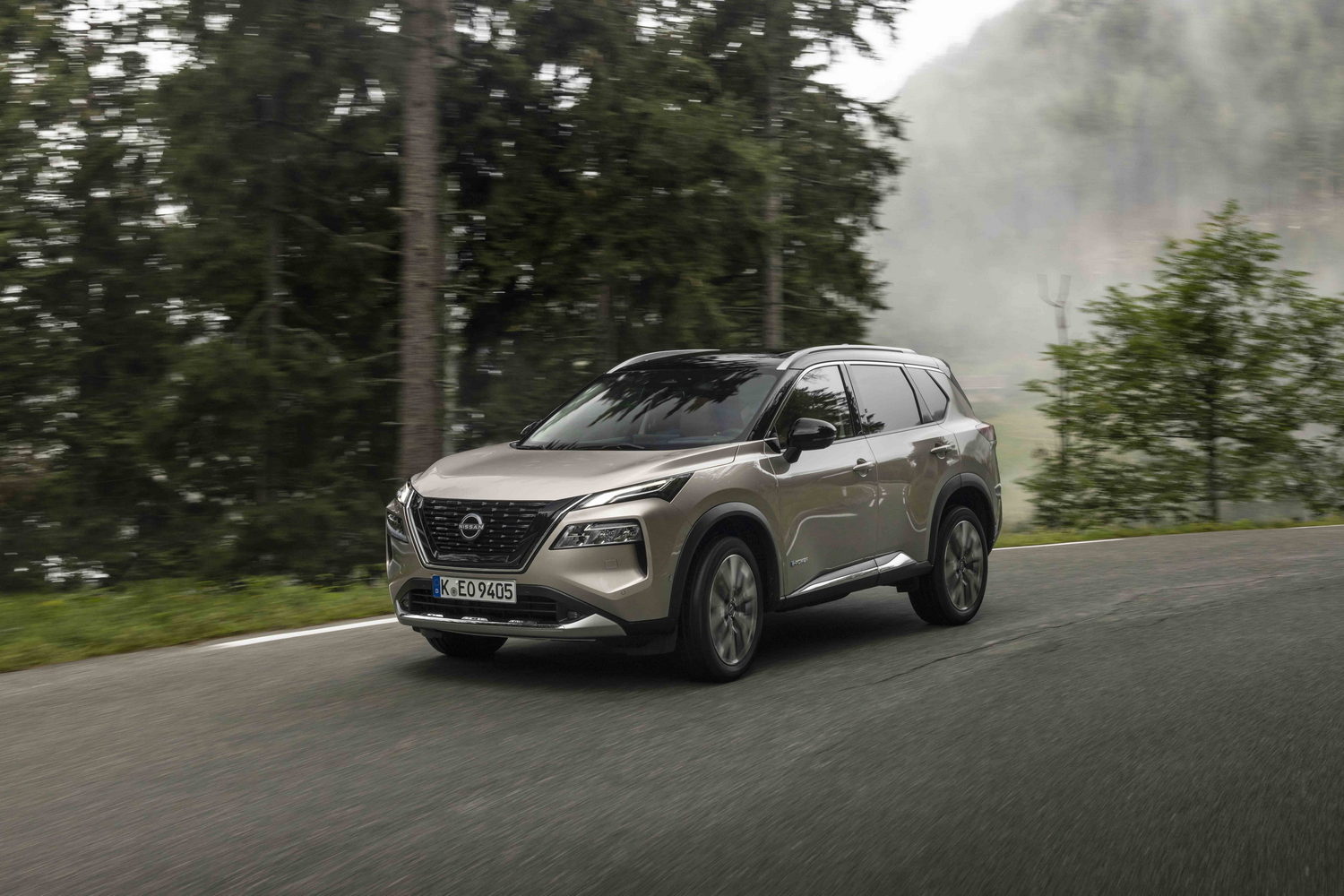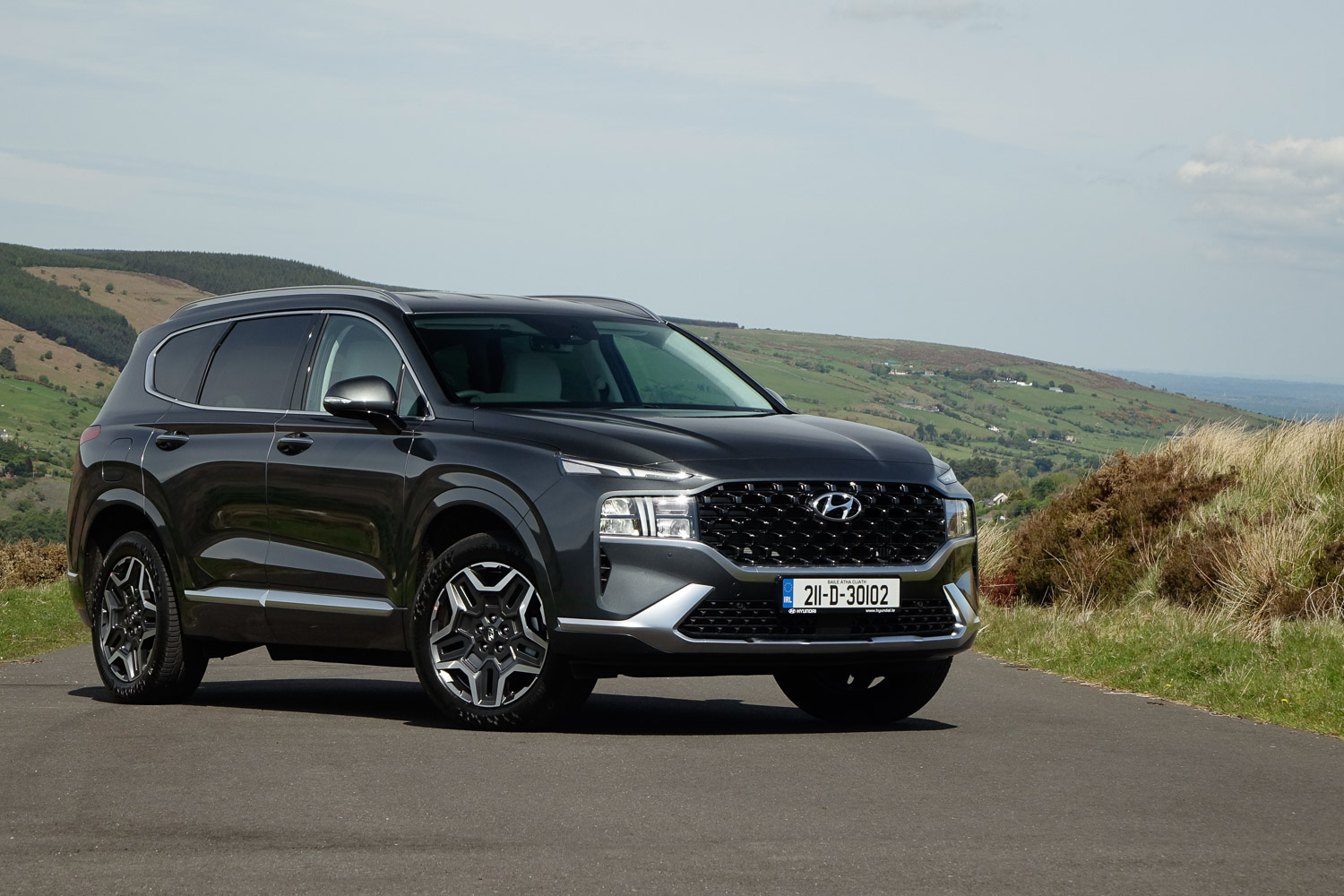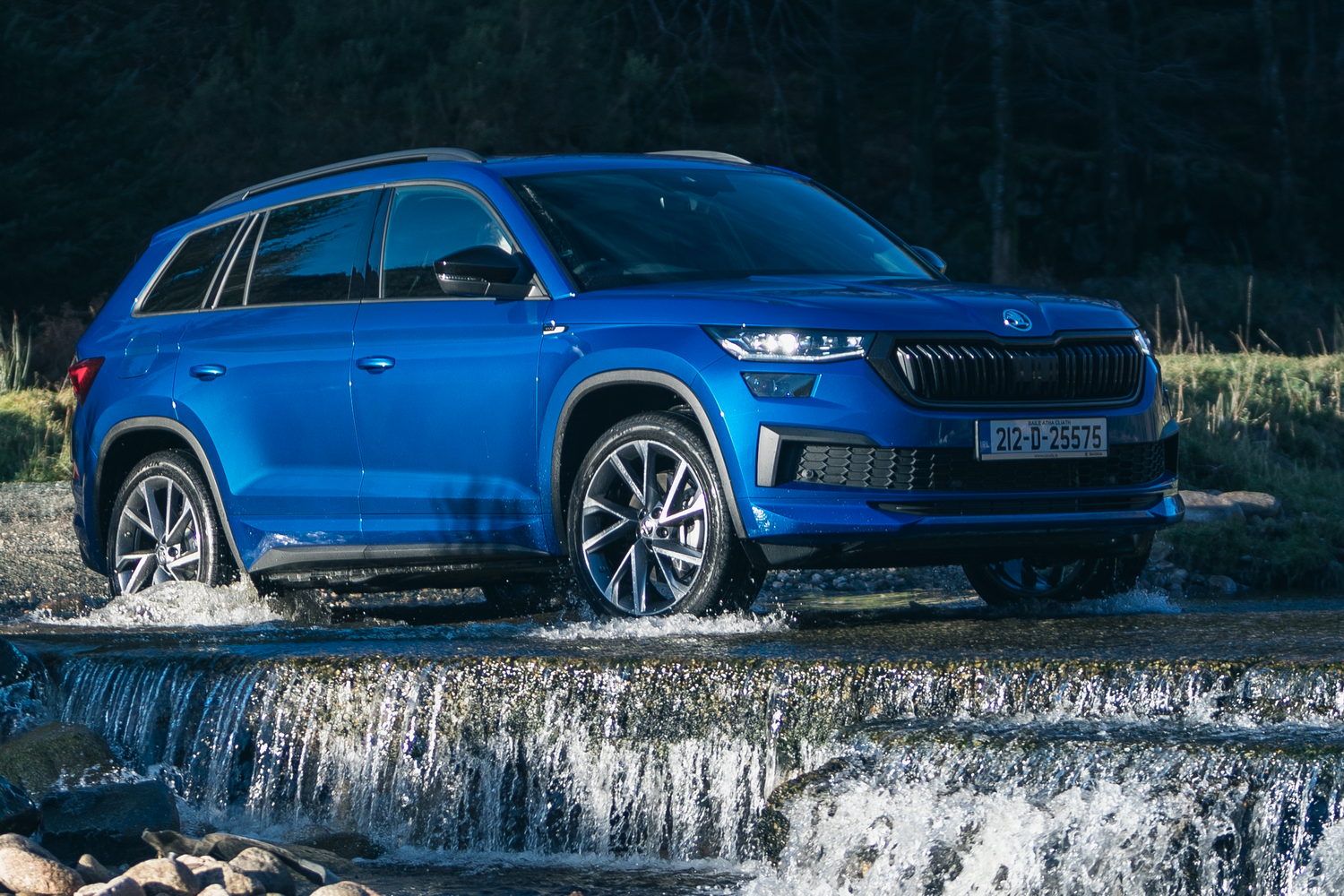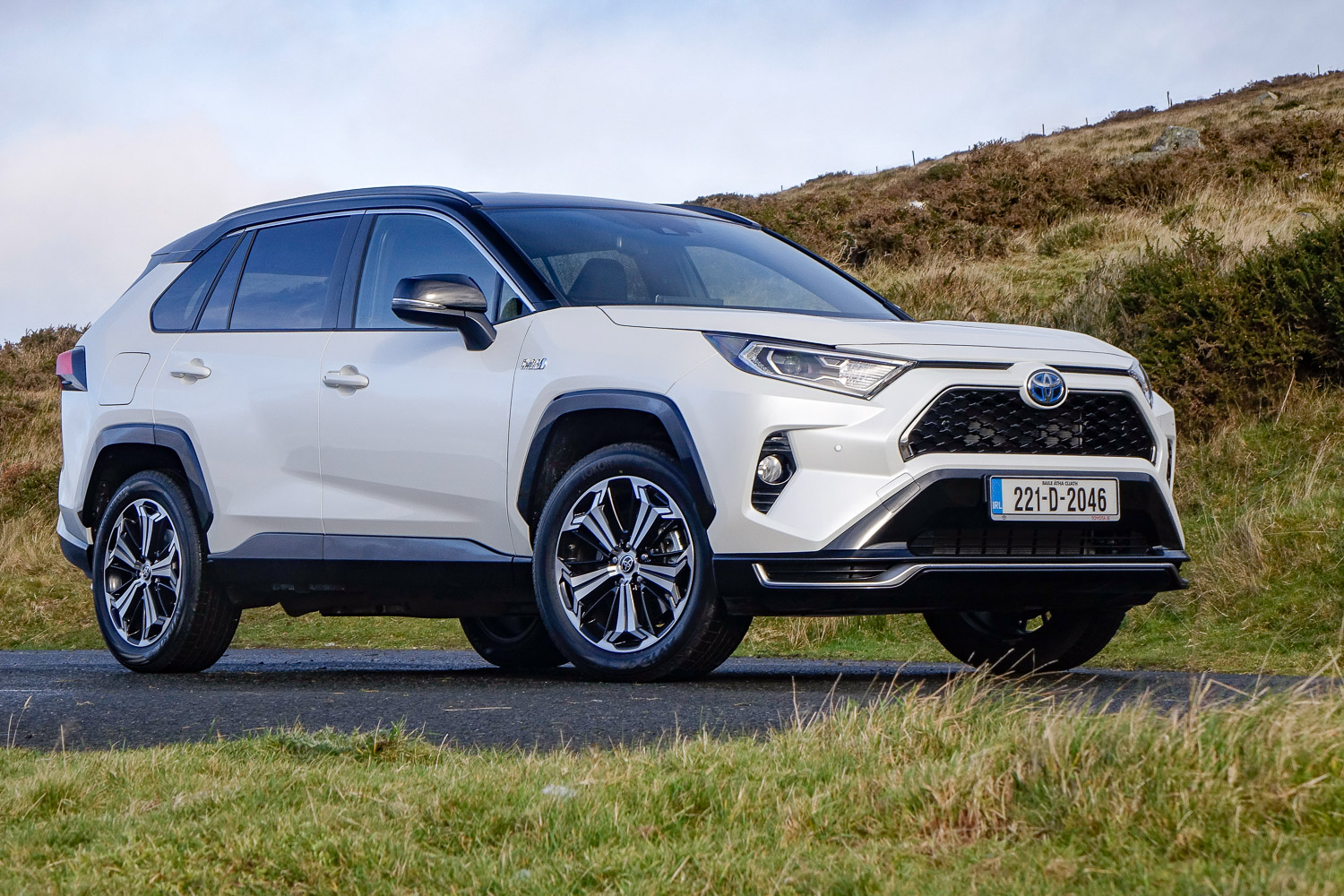Not only does the fourth-generation Nissan X-Trail gain a more modern appearance, but under the skin it is equipped with an interesting hybrid powertrain that uses a petrol engine to generate electricity for its electric motors rather than driving the wheels. Furthermore, there's the option of a seven-seat layout and a host of driver assistance systems to improve safety.
In the metal
Following in the same vein as the smaller Qashqai, the Nissan X-Trail receives an exterior design that's sharper than its predecessor's. It remains recognisable as an X-Trail, however, with much of the old car's silhouette retained, but the details mark it out as a positive step forward in terms of design.
Bracing Nissan's signature 'V-motion' grille remains and there's a new light design that sees the top sections, which carry the daytime running light signature, extend rearwards into the front wings. Silver-painted sections on the base of the bumpers allude to a more rugged off-road image, though even with the availability of an electrically deployed all-wheel-drive transmission, most X-Trail owners are unlikely to venture too far from the beaten track.
Other than the entry-grade SV model, all X-Trails receive a contrasting black roof with roof rails. However, you'll have to choose the range-topping SVE version to gain a powered tailgate as standard. The boot space gets a modest 20-litre increase over the previous X-Trail, to measure 575 litres as standard. With the rear seats folded down, that cargo volume swells to 1,424 litres in the five-seat model. The seven-seat version gets a slightly smaller boot capacity due to accommodating the third row of seats, which, when not in use, leaves 485 litres with up to a maximum of 1,298 litres with both rear rows folded away. Either way, the X-Trail feels like a substantially bigger car than the Qashqai.
The X-Trail benefits from rear passenger doors than can swing open to a very generous 85-degree angle, making it much easier for parents getting children strapped into seats and enabling easier egress generally. The (middle row) rear seats can slide fore and aft by up to 220 millimetres to either benefit passenger legroom or create more boot space.
Adding those two additional seats in the rear will cost €9,000 regardless of the three specification grades you choose. Getting in and out of them is a task best left to more agile kids, and Nissan officially states that the third-row seats accommodate passengers up to 1.60m in height (about 5ft 3 in old money).
The dashboard is a modern affair, with a 12.3-inch digital display in front of the driver, plus a 10.8-inch colour head-up display on SVE versions. A 12.3-inch touchscreen handles the infotainment side of things, and Nissan retains physical controls for the cabin temperature and ventilation settings. A flat drive selector takes up little space and the centre console includes a wireless charging pad, cupholders and a storage bin.
Driving it
Hybrids often use a continuously variable transmission that can send engine revs soaring when any kind of acceleration is applied. Nissan's approach is slightly different, as it uses a turbocharged 1.5-litre petrol engine not to create mechanical propulsion but to generate electricity to charge a compact 2kWh battery. That in turn powers the electric motor on the front axle, and in the case of the e-4orce model tested here, a second motor on the rear axle.
The end result is a smooth driving experience as the wheels are turned by electric motors. The engine maintains a more steady speed without revving in line with the car's speed. With the dual-motor setup of this version acceleration is brisk, maintaining a steady climb in speed without showing much sign of strain as the system pulls the X-Trail's 2,285kg along.
If you stick to towns and lower urban speeds, you'll barely notice the engine working. Usually it does little more than create a distant thrum as it works away as the car's onboard electricity generator. The power delivery to the wheels is pleasingly smooth, and while the suspension has enough stiffness to keep the body control in check, it maintains a degree of comfort that most will find agreeable.
The e-Pedal function requires activation each time you start the car, and it is most useful in said urban environs where stop-start traffic is more likely to be found. It takes only a short time to become used to how it works. You soon judge how to best slow the car down (and recover energy into the battery) by simply lifting off the accelerator to get that 'one-pedal' driving feel that many electric cars feature. It's worth noting that the system will never bring the vehicle to a complete halt, but will reduce speed to a few kilometres per hour. Another trick up the X-Trail's sleeve is using the rear electric motor to help counteract any longitudinal pitch experienced from lifting off or braking.
On more open sections of road, the Nissan will often coast with little to no noise from the powertrain. An impressive level of sound insulation adds to the sense of quality inside the X-Trail, ensuring it remains hushed even at motorway speeds.
What you get for your money
Nissan Ireland starts its X-Trail offering with the SV model, which means a reasonable level of standard equipment for the €45,995 entry price. Among the features are keyless entry, dual-zone air conditioning, front and rear parking sensors, an electrically adjustable driver's seat, a seven-inch TFT instrument display and an eight-inch touchscreen infotainment system. Adding the third row of seats is a €9,000 option for all grades.
The mid-level SV Premium costs €48,995, and this specification adds rear privacy glass, dual 12.3-inch displays, an electric sunroof, roof rails and Nissan's 'Around View Monitor' moving object detection.
Topping the Nissan X-Trail range is the SVE specification costing €52,995, which adds 19-inch wheels, metallic detailing on the front and rear bumpers, LED fog lights, dynamic front indicators, a powered tailgate, head-up display, wireless charging pad, heated front seats and Nissan's Pro Pilot system with a full automated parking function.
Summary
Some will wish that Nissan still offered a diesel engine in its new X-Trail, but prospective buyers may have more of an issue with the considerable cost of adding that often sought-after third row of seats. Nonetheless, thanks to the new styling, improved interior quality and the introduction of a new hybrid system, the Nissan X-Trail has gone from a segment also-ran to one of the more appealing SUVs in its class.

























































